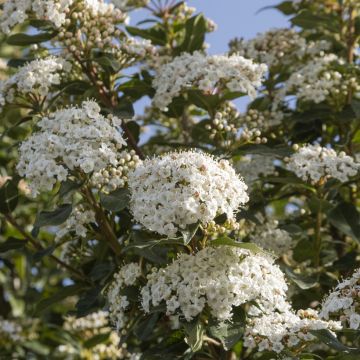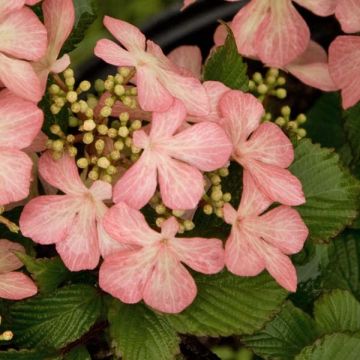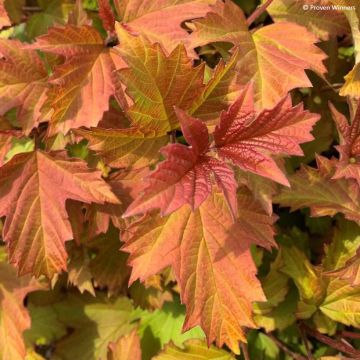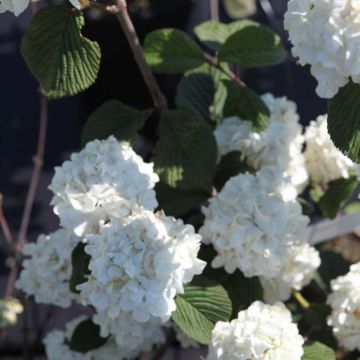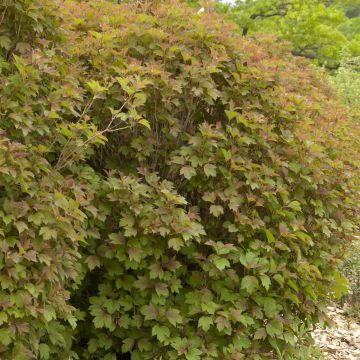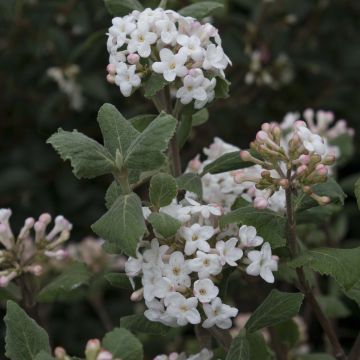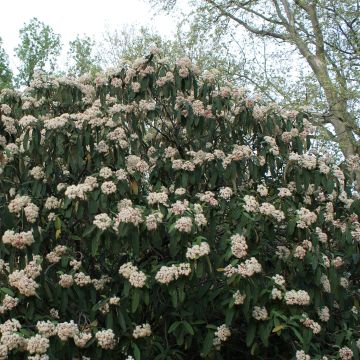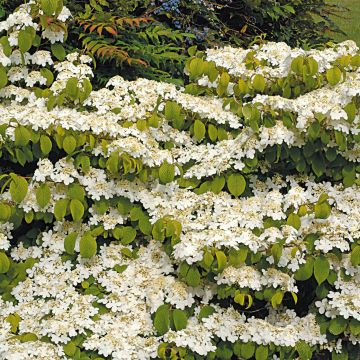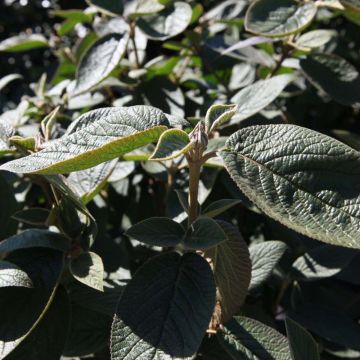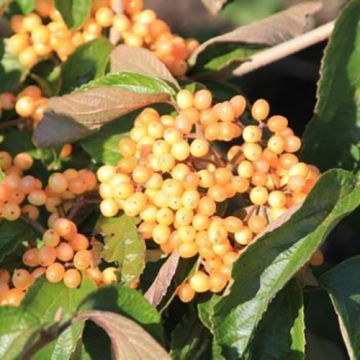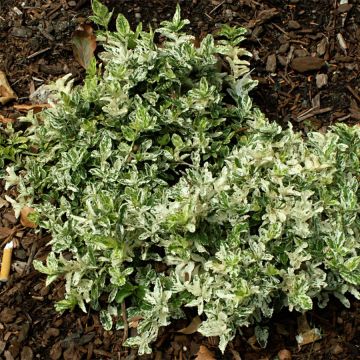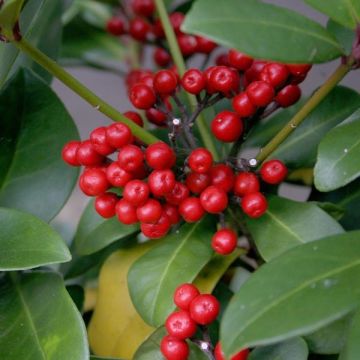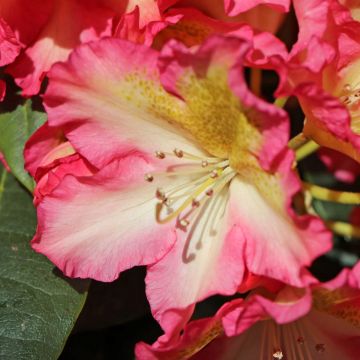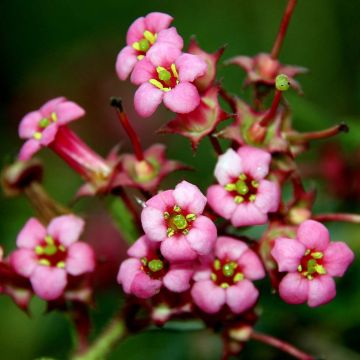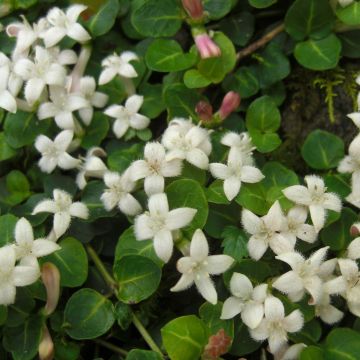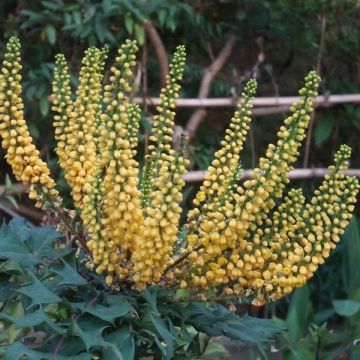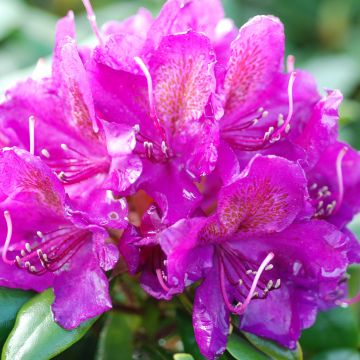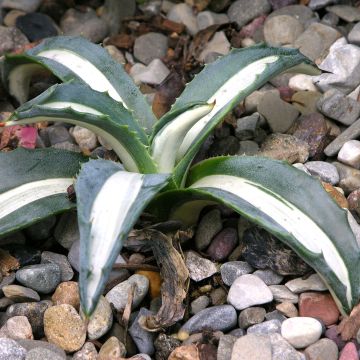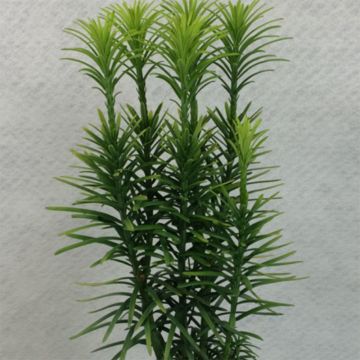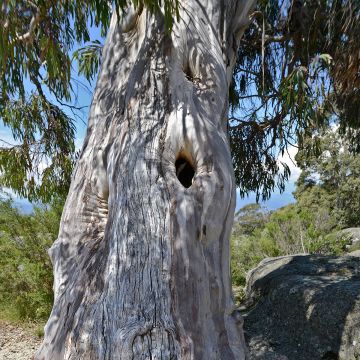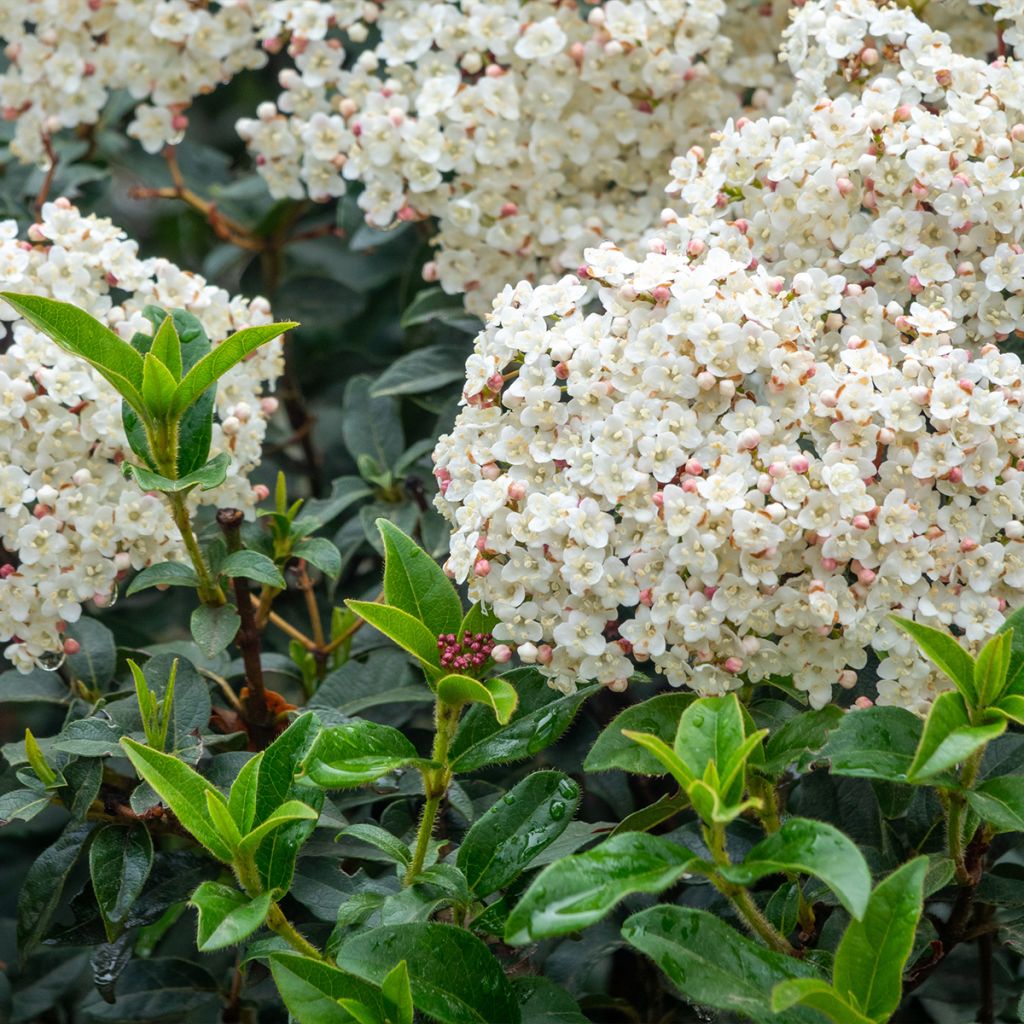

Viburnum tinus Giganteum
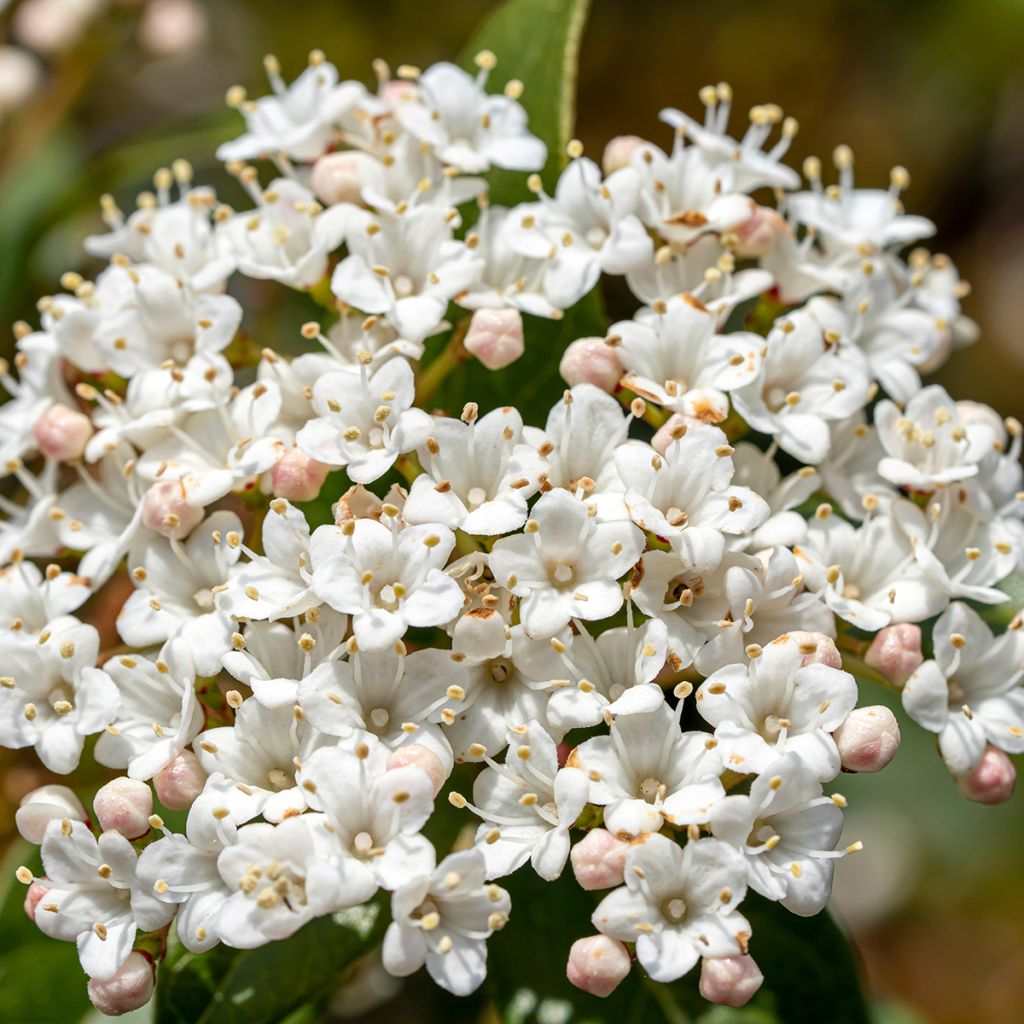

Viburnum tinus Giganteum
Viburnum tinus Giganteum
Viburnum tinus Giganteum
Laurustinus
This item cannot be shipped to the selected country
Delivery charge from €5.90
More information
Schedule delivery date,
and select date in basket
This plant carries a 24 months recovery warranty
More information
We guarantee the quality of our plants for a full growing cycle, and will replace at our expense any plant that fails to recover under normal climatic and planting conditions.
From €5.90 for pickup delivery and €6.90 for home delivery
Express home delivery from €8.90.
Does this plant fit my garden?
Set up your Plantfit profile →
Description
Viburnum tinus 'Giganteum', sometimes marketed under the name V. tinus 'Macrophyllum', is a variety of laurustinus that stands out for its large leaves and flowers. The bush is also particularly vigorous and grows rapidly. With dense foliage and evergreen in winter, it tolerates pruning well, making it perfect for creating a windbreak or hedge, alone or mixed with other shrubs. Its flowers feed bees from autumn to the end of winter. It provides shelter and food for birds that seek its berries.
Laurustinus Giganteum belongs to the Viburnaceae family (also Caprifoliaceae or Adoxaceae depending on classifications). The species Viburnum tinus is native to the Mediterranean basin and can be found in the undergrowth, on the edge of forests, and in scrubland. It is a evergreen bush relatively resistant to cold (down to -15°C (5 °F) for short periods for a mature subject), which adapts to a wide range of soils as long as they are not too wet or waterlogged in winter. Its fruits are consumed by birds that 'sow' the plant under the trees they use as perches: it is typically an undergrowth bush that tolerates the root competition of other trees perfectly.
Viburnum tinus 'Giganteum', which grows quite fast, forms a bush with an upright and rounded habit, branching from the base. It will reach about 3m (10 ft) in height and 2.50m (8 ft) in spread. Its branches bear larger leaves than the typical species type. They are simple, elliptical, pointed at their tips. With a leathery texture, they are slightly shiny and evergreen in winter. In spring the young leaves are a tender green and then turn dark green when mature. Flowering often begins in autumn, depending on the region. At the tips of one-year-old or older branches, inflorescences form in cymes that resemble round and slightly bulging clusters, measuring 6 to 8cm (2.4 to 3 in) in diameter. They are densely filled with dull purple-pink flower buds that remain decorative throughout winter. These buds open from February to late March, into small flowers measuring 2 to 3mm (0.1 in) in diameter, with 5 white petals. This slightly fragrant flowering is much visited by bees. After pollination the flowers give way to ovoid berries measuring 4 to 5mm (0.2 in) in length, with a metallic blue-black colour, containing a single seed, carried by pink-colored petioles. In the case of the laurustinus the seeds must be freed from their pulp in order to germinate: this step occurs naturally in the digestive system of birds.
Remaining verdant throughout the year and very robust, the Giganteum laurustinus is an excellent hedging bush. Like Photinias, Elaeagnus, and winter-flowering shrubs, it is perfect for bringing life to the garden during the shortest days of the year. It is also an essential plant for creating the permanent, evergreen structure of the garden, especially in the hot and dry regions where it thrives. Tolerating shade and root competition very well, Viburnum can be combined in undergrowth areas with Sarcococca and sacred bamboo, for example. As it withstands repeated pruning very well, it can be used in topiary art to sculpt original shapes from its foliage.
Report an error about the product description
Viburnum tinus Giganteum in pictures


Plant habit
Flowering
Foliage
Botanical data
Viburnum
tinus
Giganteum
Caprifoliaceae
Laurustinus
Mediterranean
Other Viburnum
Planting and care
Viburnum tinus Giganteum is a very tolerant shrub in terms of soil and exposure. Nevertheless, to ensure a good start it should be planted in well-worked soil that allows its roots to descend more quickly. In hot and dry climates it is best planted in early autumn, while in areas on the limit of its hardiness spring planting is preferable. An adult bush will withstand short frosts of around -12/-15°C (10.4/5 °F), in well-drained soil and in a sheltered location, regrowing from the stump when its vegetation has been damaged. Water abundantly, but spaced out betwen waterings, during the first two or three summers to help the bush establish itself. Afterwards it will not need any water at all in summer, even in hot and dry regions. It is advisable to protect young plants with a winter fleece if significant frosts are forecasted during the first winters.
Laurustinus tolerates limestone and clay soils very well in dry climates. It also tolerates slightly acidic soils, compact and moist in winter if there is no frost. It has no notable enemies in European gardens. This bush is very well adapted to drought and summer heat. It tolerates pruning very well, allowing it to be trained as a hedge or topiary. Laurustinus easily self-seeds in the garden (especially under perching trees) via birds: remove the young plants as soon as you spot them.
Planting period
Intended location
Care
This item has not been reviewed yet - be the first to leave a review about it.
Evergreen shrubs
Haven't found what you were looking for?
Hardiness is the lowest winter temperature a plant can endure without suffering serious damage or even dying. However, hardiness is affected by location (a sheltered area, such as a patio), protection (winter cover) and soil type (hardiness is improved by well-drained soil).

Photo Sharing Terms & Conditions
In order to encourage gardeners to interact and share their experiences, Promesse de fleurs offers various media enabling content to be uploaded onto its Site - in particular via the ‘Photo sharing’ module.
The User agrees to refrain from:
- Posting any content that is illegal, prejudicial, insulting, racist, inciteful to hatred, revisionist, contrary to public decency, that infringes on privacy or on the privacy rights of third parties, in particular the publicity rights of persons and goods, intellectual property rights, or the right to privacy.
- Submitting content on behalf of a third party;
- Impersonate the identity of a third party and/or publish any personal information about a third party;
In general, the User undertakes to refrain from any unethical behaviour.
All Content (in particular text, comments, files, images, photos, videos, creative works, etc.), which may be subject to property or intellectual property rights, image or other private rights, shall remain the property of the User, subject to the limited rights granted by the terms of the licence granted by Promesse de fleurs as stated below. Users are at liberty to publish or not to publish such Content on the Site, notably via the ‘Photo Sharing’ facility, and accept that this Content shall be made public and freely accessible, notably on the Internet.
Users further acknowledge, undertake to have ,and guarantee that they hold all necessary rights and permissions to publish such material on the Site, in particular with regard to the legislation in force pertaining to any privacy, property, intellectual property, image, or contractual rights, or rights of any other nature. By publishing such Content on the Site, Users acknowledge accepting full liability as publishers of the Content within the meaning of the law, and grant Promesse de fleurs, free of charge, an inclusive, worldwide licence for the said Content for the entire duration of its publication, including all reproduction, representation, up/downloading, displaying, performing, transmission, and storage rights.
Users also grant permission for their name to be linked to the Content and accept that this link may not always be made available.
By engaging in posting material, Users consent to their Content becoming automatically accessible on the Internet, in particular on other sites and/or blogs and/or web pages of the Promesse de fleurs site, including in particular social pages and the Promesse de fleurs catalogue.
Users may secure the removal of entrusted content free of charge by issuing a simple request via our contact form.
The flowering period indicated on our website applies to countries and regions located in USDA zone 8 (France, the United Kingdom, Ireland, the Netherlands, etc.)
It will vary according to where you live:
- In zones 9 to 10 (Italy, Spain, Greece, etc.), flowering will occur about 2 to 4 weeks earlier.
- In zones 6 to 7 (Germany, Poland, Slovenia, and lower mountainous regions), flowering will be delayed by 2 to 3 weeks.
- In zone 5 (Central Europe, Scandinavia), blooming will be delayed by 3 to 5 weeks.
In temperate climates, pruning of spring-flowering shrubs (forsythia, spireas, etc.) should be done just after flowering.
Pruning of summer-flowering shrubs (Indian Lilac, Perovskia, etc.) can be done in winter or spring.
In cold regions as well as with frost-sensitive plants, avoid pruning too early when severe frosts may still occur.
The planting period indicated on our website applies to countries and regions located in USDA zone 8 (France, United Kingdom, Ireland, Netherlands).
It will vary according to where you live:
- In Mediterranean zones (Marseille, Madrid, Milan, etc.), autumn and winter are the best planting periods.
- In continental zones (Strasbourg, Munich, Vienna, etc.), delay planting by 2 to 3 weeks in spring and bring it forward by 2 to 4 weeks in autumn.
- In mountainous regions (the Alps, Pyrenees, Carpathians, etc.), it is best to plant in late spring (May-June) or late summer (August-September).
The harvesting period indicated on our website applies to countries and regions in USDA zone 8 (France, England, Ireland, the Netherlands).
In colder areas (Scandinavia, Poland, Austria...) fruit and vegetable harvests are likely to be delayed by 3-4 weeks.
In warmer areas (Italy, Spain, Greece, etc.), harvesting will probably take place earlier, depending on weather conditions.
The sowing periods indicated on our website apply to countries and regions within USDA Zone 8 (France, UK, Ireland, Netherlands).
In colder areas (Scandinavia, Poland, Austria...), delay any outdoor sowing by 3-4 weeks, or sow under glass.
In warmer climes (Italy, Spain, Greece, etc.), bring outdoor sowing forward by a few weeks.

































